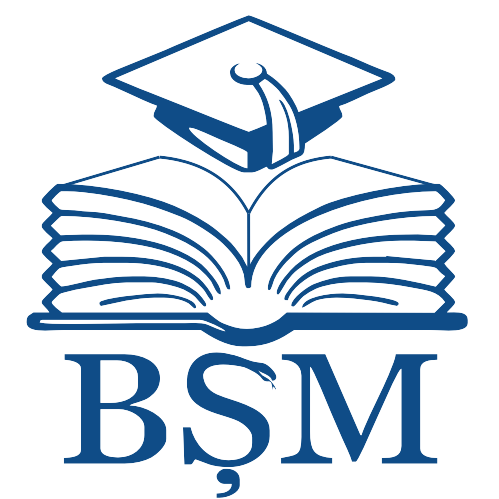|
|
- IRMS - Nicolae Testemitanu SUMPh
- 1. COLECȚIA INSTITUȚIONALĂ
- MATERIALE ALE CONFERINȚELOR ȘTIINȚIFICE
- „Cells and tissues transplantation. Actualities and perspectives. The 3rd edition” dedicated to the 80th anniversary of the founding of Nicolae Testemitanu State University of Medicine and Pharmacy. Chisinau, March 21-22, 2025
- The Materials of the National Scientific Conference with International Participation „Cells and tissues transplantation. Actualities and perspectives. The 3rd edition” dedicated to the 80th anniversary of the founding of Nicolae Testemitanu State University of Medicine and Pharmacy. Chisinau, March 21-22, 2025: [Abstracts]
Please use this identifier to cite or link to this item:
http://hdl.handle.net/20.500.12710/30500
| Title: | Human-induced pluripotent stem cell-derived atrial cardiomyocytes: a model for atrial fibrillation research and therapy |
| Authors: | Ciobanu, Gabriela
Grib, Livi |
| Keywords: | atrial fibrillation;human-induced pluripotent stem cells;atrial cardiomyocytes;disease modeling;pharmacological testing;personalized medicine |
| Issue Date: | 2025 |
| Publisher: | CEP Medicina |
| Citation: | CIOBANU, Gabriela and Livi GRIB. Human-induced pluripotent stem cell-derived atrial cardiomyocytes: a model for atrial fibrillation research and therapy. In: Cells and tissues transplantation. Actualities and perspectives. The 3rd edition : The Materials of the National Scientific Conference with international participation dedicated to the 80th anniversary of the founding of Nicolae Testemitanu State University of Medicine and Pharmacy. Chisinau, March 21-22, 2025: [abstracts]. Chişinău: CEP Medicina, 2025, p. 26. ISBN 978-9975-82-413-2. |
| Abstract: | Introduction: Atrial fibrillation (AF) is the most common cardiac arrhythmia, affecting over 33
million individuals worldwide. Despite extensive research, current AF treatment options are limited
by high recurrence rates, adverse effects, and variability in pathophysiology. Human-induced
pluripotent stem cell-derived atrial cardiomyocytes (hiPSC-aCMs) offer a promising in vitro model for
studying AF, drug screening, and personalized therapy.
Materials and Methods:The differentiation of hiPSCs into atrial cardiomyocytes involves the
manipulation of signaling pathways such as Wnt, retinoic acid, and bone morphogenetic proteins.
Techniques including electrical stimulation, metabolic modifications, and three-dimensional (3D)
tissue engineering have been employed to enhance hiPSC-aCM maturation. Additionally,
CRISPR/Cas9 gene editing and electrophysiological assessments have been utilized to refine AF
models and investigate patient-specific mutations.
Results:Studies have demonstrated that hiPSC-aCMs recapitulate key electrophysiological and
structural characteristics of atrial cardiomyocytes. Patient-specific hiPSC-aCMs have been used to
model familial AF and investigate the impact of ion channel mutations. Furthermore, pharmacological
assessments using atrial-selective drugs, such as IKur and If channel inhibitors, have validated hiPSCaCMs as a robust platform for drug screening. In disease modeling, optogenetic pacing has been used
to induce AF-like remodeling, revealing novel insights into AF pathophysiology.
Conclusions:The development of hiPSC-aCMs represents a significant advancement in AF research,
providing a scalable and patient-specific model for studying disease mechanisms, drug efficacy, and
toxicity. Despite the challenges of achieving full cellular maturation, continued optimization of culture
conditions and gene-editing technologies holds promise for refining AF models. Ultimately, hiPSCaCMs offer a transformative approach to personalized medicine, enabling the development of targeted
therapies and regenerative strategies for AF treatment. |
| metadata.dc.relation.ispartof: | Cells and tissues transplantation. Actualities and perspectives. The 3-rd edition. Chisinau, March 21-22, 2025 |
| URI: | https://repository.usmf.md/handle/20.500.12710/30500 |
| ISBN: | 978-9975-82-413-2 |
| Appears in Collections: | The Materials of the National Scientific Conference with International Participation „Cells and tissues transplantation. Actualities and perspectives. The 3rd edition” dedicated to the 80th anniversary of the founding of Nicolae Testemitanu State University of Medicine and Pharmacy. Chisinau, March 21-22, 2025: [Abstracts]
|
Items in DSpace are protected by copyright, with all rights reserved, unless otherwise indicated.
|


